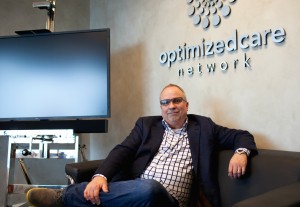Mar 20
2020
How Virtual Health Represents The Next Evolution of Healthcare

By Brian Slusser, CEO and co-founder, Health In Motion Network.
In 2020, much in our daily lives can be accomplished virtually. From clothes shopping to ordering groceries, there is a growing desire to accomplish important tasks remotely, allowing individuals to save time and effort on fewer in-person trips.
But with so much technology available, why does healthcare feel like it’s lagged behind?
Traditional telemedicine — typically involving phone calls and occasionally video chats with providers — has helped allow individuals to contact their doctors remotely, which can be a tool for both providers and their patients. The utility of telemedicine, however, has its limits, and it’s crucial for both healthcare professionals and average consumers to understand those limitations and move toward a better method.
That better method is represented by virtual health, a new way of thinking about remote doctor visits that combines the benefits of traditional, in-person doctor visits with the convenience and accessibility of telemedicine by establishing a virtual health hub that can accomplish nearly everything that a traditional visit can. This model involves providers on both sides of the visit, known as a “tele-presenter” model.
As a new decade begins, healthcare needs should be addressed through the innovative technology that drives much of our life. And with the correct shift in emphasis, virtual health can help improve healthcare for people who need it.
Here are three ways virtual health and telemedicine differ, and why the disruptive new platform is worth embracing:
Accurate, Detailed Visits
For the sake of a patient’s wellbeing, receiving an accurate diagnosis from a healthcare professional is critical. But with many telemedicine strategies, a detailed and accurate assessment can be difficult.
With a simple phone call or video chat, a doctor needs to rely on the patient to self-diagnose and can only ask them questions about their symptoms and how they’re feeling. While this can sometimes be effective, a doctor can’t give their best assessment without being in the room with a patient.
Fortunately, virtual health can bridge that gap by allowing a second professional to help the physician assess and diagnose the patient. In the case of the Health In Motion Network’s virtual health hub at Indian Lake High School — a partnership with Mary Rutan Hospital in Bellefontaine, Ohio — a school nurse is on hand with the patient to help relay information to doctors, providing information that typically needs to come from an in-person meeting.
